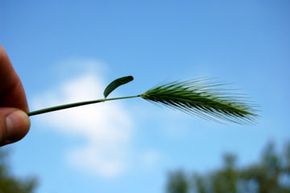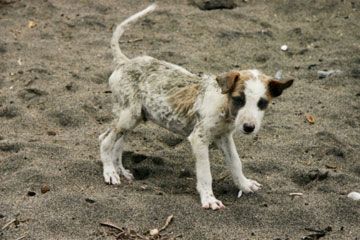Most dogs love any chance to run, sniff and poke around outside. Enjoying the great outdoors together is a wonderful way to spend time with your dog and get some much-needed exercise for the both of you. If you're going beyond just a walk around the block, though, there are some potential hazards that you need to know about in case your pooch encounters one.
If you happen to be hanging out in heavily mix-forested areas in the north or western United States, Canada, or even in areas of Africa or Southeast Asia with your dog, there's a chance that he could encounter a porcupine. These spiny rodents are herbivores -- big, gentle and slow -- but they have a great defense mechanism. Sometimes, carnivores like wolves and coyotes (and even humans) eat porcupines. Maybe that's why some dogs also find them appealing and try to get the best of them. When threatened, a porcupine usually just sweeps its tail, and the intruder ends up as a pincushion.
Advertisement
You'd think one nose full of quills would be enough to put any dog off his curiosity about porcupines, but some dogs never learn. If your pooch tangles with one of these spiky critters and ends up covered in quills, take him to the vet. If it's just a few quills, however, you can try to remove them yourself.
Get yourself some rubber gloves, a pair of needle-nose pliers and someone to help you hold your dog. You may need to cover his eyes at first so he doesn't see the pliers coming. Stay calm and talk to him softly. Next, grasp each quill near the point of entry and pull straight out. Your pooch will probably pull back, making it easy to remove the quills. Try not to break any of them. Once you're done removing the quills, apply a topical antiseptic to the affected area.
If you're leery about pulling quills out of a dog yourself, if he has a large number of them, or if the quills are embedded in tricky or painful places (inside the dog's mouth, for instance), your pet will likely need sedation or even anesthesia and a long, slow removal process. Your vet will probably prescribe antibiotics to stave off infection as well.
Up next: Another potential outdoor hazard -- an innocent-looking grass that can be deadly to your dog.
Advertisement




